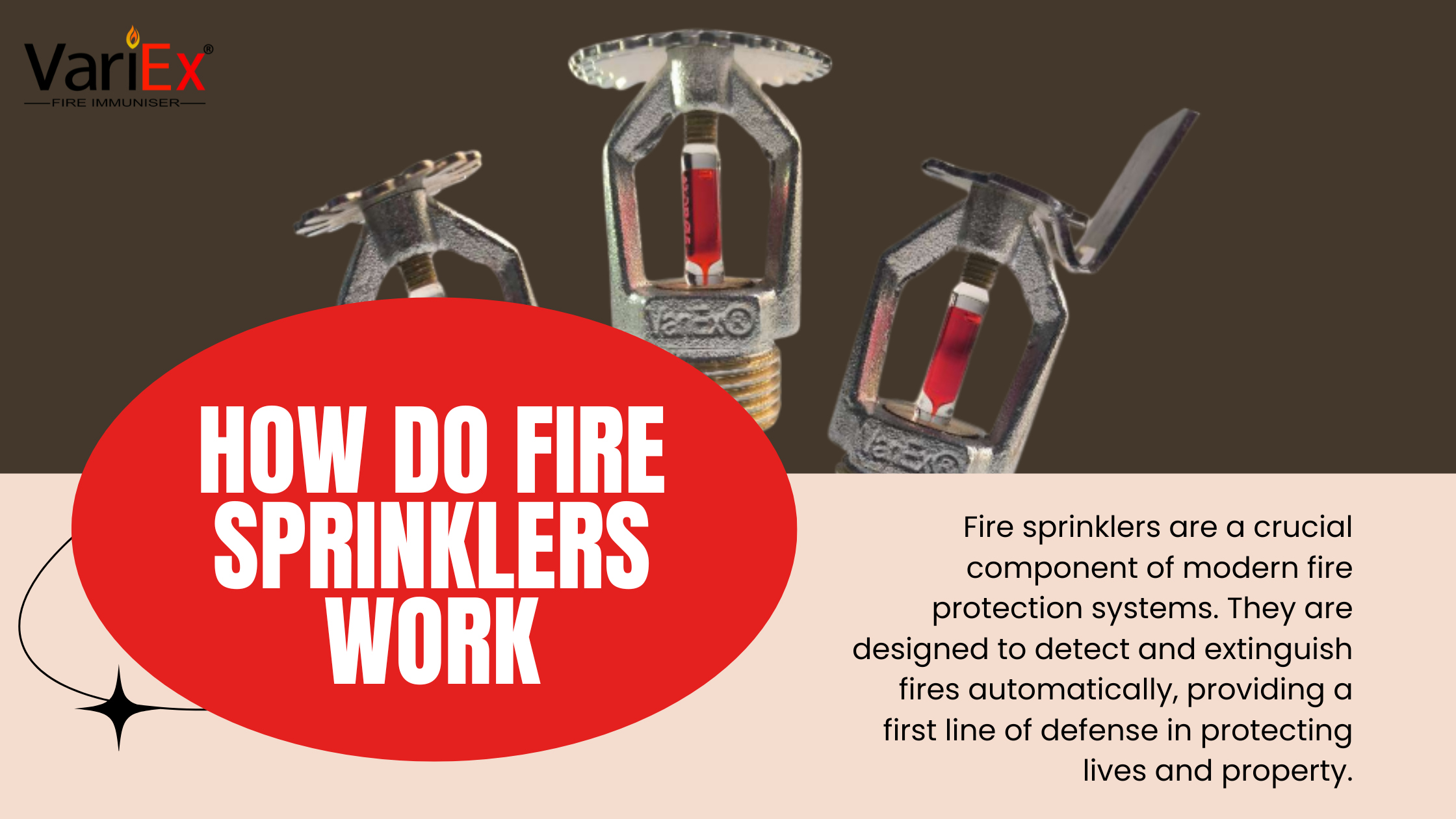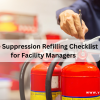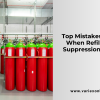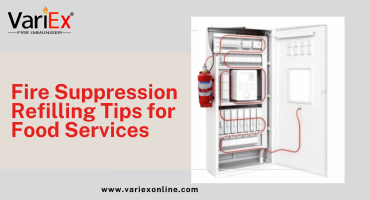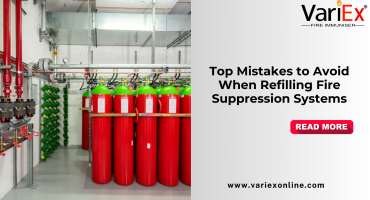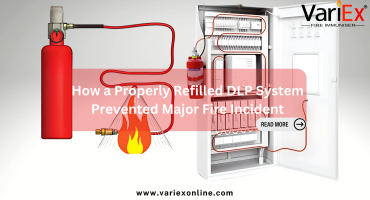![]()
Fire Immuniser
+91-7829629111
Email: info@variex.in
Varistor Technologies Pvt. Ltd.
Block-1, First Floor, Ardente Office One, Hoodi Circle, ITPL Main Road, Bengaluru, Karnataka 560048, IN
How Do Fire Sprinklers Work
How Do Fire Sprinklers Work
Fire sprinklers are a crucial component of modern fire protection systems. They are designed to detect and extinguish fires automatically, providing a first line of defense in protecting lives and property. This article will explore the mechanics of fire sprinklers, their types, installation processes, maintenance requirements, and their significance in fire safety.
Understanding Fire Sprinklers
Fire sprinklers consist of a network of pipes filled with water, equipped with specialized heads that release water when a fire is detected. Their primary purpose is to control or extinguish fires before the arrival of fire service personnel, minimizing damage and enhancing occupant safety.
History of Fire Sprinklers
The concept of fire sprinklers dates back to the early 19th century. The first patented sprinkler system was developed by an American inventor, Henry S. Parmalee, in 1874. This invention marked the beginning of a significant advancement in fire protection, leading to the development of various sprinkler technologies over the years.
Components of Fire Sprinkler Systems
Fire sprinkler systems consist of several essential components, each playing a vital role in the system's functionality. Understanding these components is crucial for anyone involved in fire safety management.
1. Sprinkler Heads
Sprinkler heads are the most visible part of a fire sprinkler system. They are activated by heat and release water in a specific pattern to cover the area beneath them. There are different types of sprinkler heads, including:
- Pendent Sprinklers: Hang from the ceiling and spray water downward.
- Upright Sprinklers: Point upwards and are often used in warehouses or areas with high ceilings.
- Sidewall Sprinklers: Installed on walls and are effective in areas with limited ceiling space.
- Concealed Sprinklers: Hidden within the ceiling, providing a discreet appearance.
2. Pipes and Valves
The piping network delivers water from the supply source to the sprinkler heads. Pipes are typically made from steel, copper, or plastic, depending on the system design and installation environment. Valves control the flow of water through the system, ensuring that it can be turned off for maintenance or emergencies.
3. Water Supply
Fire sprinkler systems require a reliable water supply to function effectively. This can come from municipal water sources, storage tanks, or fire hydrants. The system must maintain sufficient water pressure to ensure that all sprinkler heads can operate simultaneously if necessary.
4. Alarm Systems
Most modern fire sprinkler systems are integrated with alarm systems. When a sprinkler is activated, it can trigger alarms to alert occupants and emergency services, ensuring a swift response to the fire.
5. Control Panels
Control panels monitor the system's status, providing information on water pressure, system integrity, and any alarms triggered by sprinkler activation.
How Fire Sprinklers Work
Fire sprinklers operate based on the principles of heat detection and water discharge. Here’s a step-by-step breakdown of how they function:
1. Heat Detection
When a fire starts, it produces heat. The air around the fire warms up, and the temperature can rise significantly within a short period. Each sprinkler head is equipped with a thermal element that reacts to heat. This element can be a glass bulb filled with a colored liquid or a fusible link.
- Glass Bulb: The bulb contains a liquid that expands when heated, causing the bulb to shatter and release water.
- Fusible Link: A metal link that melts at a specific temperature, allowing a valve to open and water to flow.
2. Water Release
Once the thermal element is activated, water is released from the sprinkler head. The sprinkler system is designed to deliver water in a specific pattern to maximize coverage. This pattern can vary based on the type of head and the nature of the fire.
3. Fire Control
The released water works to control the fire by cooling the flames and reducing the available oxygen. This dual action can effectively extinguish the fire or at least slow its spread until firefighters arrive.
4. System Reset
After the fire is controlled, the sprinkler system must be reset. This involves repairing any damaged components, refilling water supplies, and ensuring that the system is functional for future incidents.
Types of Fire Sprinkler Systems
Fire sprinkler systems can be categorized into various types based on their design, installation, and operational principles. Here are the main types:
1. Wet Pipe Sprinkler Systems
Wet pipe systems are the most common type of fire sprinkler system. In this design, the pipes are filled with water at all times. When a sprinkler head activates, water is immediately discharged.
Advantages:
- Quick response time.
- Simple design and installation.
- Requires minimal maintenance.
Disadvantages:
- Risk of freezing in unheated areas.
2. Dry Pipe Sprinkler Systems
Dry pipe systems are used in environments where the risk of freezing is high. In this design, the pipes are filled with pressurized air or nitrogen, and water is held in a separate storage tank. When a sprinkler head activates, the pressurized air is released, allowing water to flow into the pipes.
Advantages:
- Suitable for unheated spaces.
- Reduces the risk of water damage due to pipe freezing.
Disadvantages:
- Slower response time compared to wet pipe systems.
3. Pre-Action Sprinkler Systems
Pre-action systems combine elements of both wet and dry pipe systems. The pipes are filled with air, but water is held back by a valve that opens when the fire detection system is activated. This system is ideal for areas where water damage must be minimized, such as data centers or museums.
Advantages:
- Reduces the risk of accidental discharge.
- Allows for greater control over water release.
Disadvantages:
- More complex and expensive to install.
4. Deluge Sprinkler Systems
Deluge systems are used in high-hazard areas where rapid fire spread is a concern. These systems have open sprinkler heads that release water simultaneously when the fire detection system is activated.
Advantages:
- Provides immediate water coverage over a large area.
- Effective for controlling large, rapidly spreading fires.
Disadvantages:
- Requires a reliable water supply.
- Can cause significant water damage if activated unintentionally.
Benefits of Fire Sprinklers
Fire sprinklers offer numerous benefits that contribute to safety, property protection, and cost savings:
1. Life Safety
The primary benefit of fire sprinklers is their ability to save lives. By controlling or extinguishing fires before they spread, sprinklers provide critical time for occupants to evacuate and for firefighters to respond.
2. Property Protection
Fire sprinklers significantly reduce property damage caused by fire. Studies have shown that buildings with sprinkler systems experience less severe damage compared to those without them.
3. Insurance Cost Savings
Many insurance companies offer discounts on premiums for buildings equipped with fire sprinklers. The reduced risk of extensive fire damage translates to lower insurance costs.
4. Code Compliance
Many building codes and regulations require fire sprinkler systems in certain types of buildings, particularly in commercial properties. Installing sprinklers ensures compliance with these regulations.
5. Reduced Firefighting Resources
With effective sprinkler systems in place, the intensity of fires is often reduced, allowing firefighters to focus on controlling the situation rather than managing extensive fires.
Installation Considerations
When installing fire sprinkler systems, several factors must be considered to ensure effectiveness and compliance with local codes:
1. Building Design
The layout of the building will influence the type of sprinkler system installed, including the placement of sprinkler heads, piping, and valves.
2. Local Codes and Regulations
Different regions have specific building codes governing fire sprinkler installations. Compliance with these codes is essential to avoid legal issues and ensure safety.
3. Hydraulic Calculations
Hydraulic calculations determine the water supply needed for the sprinkler system based on the building's layout, sprinkler head type, and expected fire load. This ensures that the system can effectively control a fire.
4. Type of Sprinkler System
Choosing the right type of sprinkler system depends on the environment, building usage, and potential hazards present.
5. Professional Installation
Fire sprinkler systems should be installed by licensed professionals with experience in fire protection. Proper installation is crucial for the system's reliability and performance.
Maintenance of Fire Sprinkler Systems
Regular maintenance is vital to ensure that fire sprinkler systems operate effectively when needed. Maintenance tasks include:
1. Inspections
Routine inspections should be conducted to check for any visible signs of damage or wear, including corroded pipes, damaged sprinkler heads, and leaks.
2. Testing
Fire sprinkler systems should be tested at least annually to ensure proper water flow and pressure. This testing can identify any issues that may prevent the system from functioning correctly.
3. System Flush
Periodic flushing of the system helps remove debris and sediment that may accumulate in the pipes, ensuring optimal water flow.
4. Sprinkler Head Maintenance
Inspecting and cleaning sprinkler heads is crucial, as dirt and obstructions can impede water flow. Ensure that sprinkler heads are not obstructed by furniture, decorations, or structural elements.
5. Record Keeping
Keeping detailed records of inspections, tests, and maintenance activities is essential for compliance with local regulations and for tracking the system's history.
Conclusion
Fire sprinklers are a vital component of modern fire protection strategies. Understanding how they work, their various types, and their maintenance requirements can help ensure the safety of buildings and their occupants. With proper installation and regular maintenance, fire sprinklers can effectively protect lives and property from the devastating effects of fire.
Frequently Asked Questions
A fire sprinkler system is an automated fire protection system that uses water to extinguish or control fires. It consists of a network of pipes, sprinkler heads, and a water supply that activates when heat is detected.
Fire sprinklers detect a fire through heat-sensitive elements in the sprinkler heads. These can be glass bulbs filled with liquid or fusible links that melt at specific temperatures, allowing water to flow when activated.
The main types include:
- Wet Pipe Systems: Filled with water at all times.
- Dry Pipe Systems: Filled with pressurized air; water is released when a sprinkler head activates.
- Pre-Action Systems: Combines features of wet and dry systems to prevent accidental discharge.
- Deluge Systems: Releases water from all heads simultaneously upon activation.
Fire sprinklers are often required in commercial buildings, high-rise structures, residential complexes, and areas with high fire risks, such as warehouses or places with flammable materials. Local building codes dictate specific requirements.
Fire sprinkler systems should be inspected at least once a year, and some components may need more frequent checks. Routine inspections ensure the system is functional and compliant with regulations.
Final Say
At VariEx.in and VariexOnline.com, we specialize in supplying and installing top-quality fire fighting systems and equipment. From fire extinguishers to advanced suppression systems, we offer comprehensive solutions tailored to your needs. Our experienced team ensures precise installation and maintenance for optimal safety.
Trust VariEx for reliable fire protection. Contact us online or call 7829629111 to learn more.
We specialize in manufacturing, supplying, and distributing a comprehensive range of fire fighting equipment, including state-of-the-art fire extinguishers. Read our most searched blogs and find interesting information on topics such as how to use a fire extinguisher, how to calculate fire fighting water tank capacity, fire extinguisher refilling, obtaining a Fire NOC, understanding fire fighting systems, types of fire protection systems, the fire hydrant system, and the fire sprinkler system. These resources provide essential knowledge for ensuring safety and compliance with fire safety regulations. Additionally, you can explore guides on the maintenance of fire protection equipment, the latest advancements in fire safety technology, and best practices for fire risk assessment and management.
Our expertise extends to fire alarm systems, fire hydrant systems, and fire suppression systems, including fire sprinklers. Each product meets rigorous international standards for reliability and performance, ensuring effective fire safety products tailored to diverse applications and industries. Additionally, we are providing Fire Extinguisher Refilling and AMC services to ensure ongoing maintenance and operational readiness of fire safety equipment.
"WHAT YOU CAN READ NEXT"
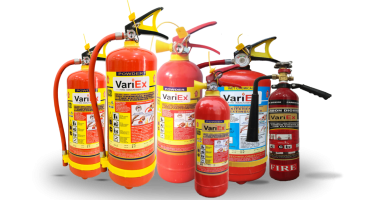 Read more +24 November 2023 in Fire Extinguisher
Read more +24 November 2023 in Fire ExtinguisherWhat types of fire extinguishers are available for different fire classes?
 Read more +28 April 2025 in Fire Suppression
Read more +28 April 2025 in Fire Suppression

